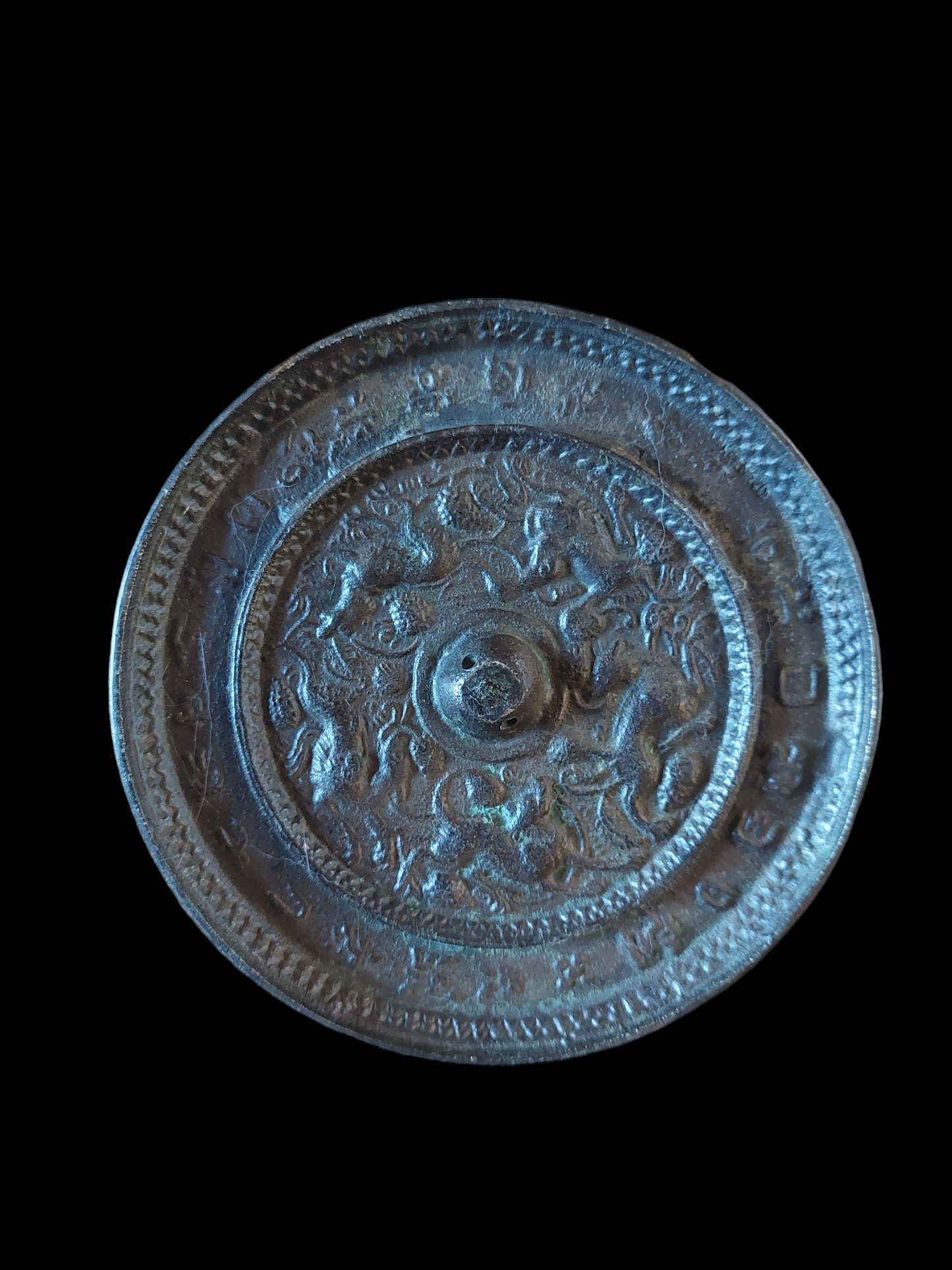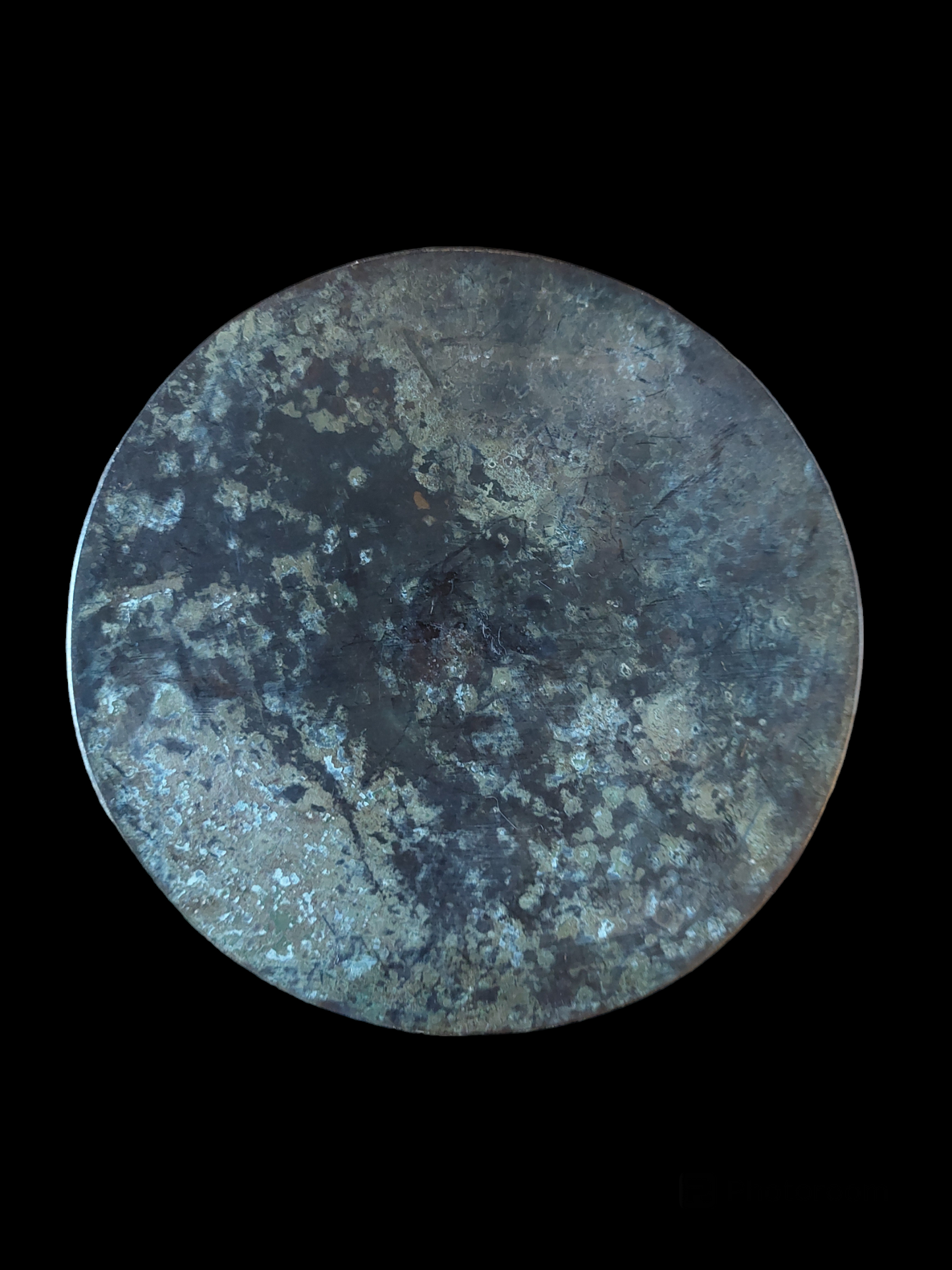Seawolf Shop
Old Chinese mirror Sea Beasts and Grapes 120 millimeter
Old Chinese mirror Sea Beasts and Grapes 120 millimeter
Couldn't load pickup availability
Share
Old Chinese mirror, made somewhere in the 1st half of the 20th century. Made from bronze, which has beautifully aged with a dark green-grey patina over the years. So please take note; while we usually recommend to polish your mirrors regularly to keep them shiny, of course for this one we certainly wouldn't recommend such a thing.
Size: 12 centimeters diameter and 296 grams.
This Chinese mirror has a very ancient design. The style, with the central knob on the decorated backside and the Chinese symbolism (in this case four symbols for happiness and well-being) is amongst the oldest known Chinese shamanic mirrors, dating back almost 4000 years. Mirrors like this are often made with the 'lost wax' bronze casting method. This style of mirror is still highly regarded nowadays.
The decoration on this mirror is a replica of a motive that became very popular in the Chinese Tang dynasty (618-907 CE); a kind of depiction known as Kaiyu Budo-kyo, a name deriving from the typical pattern of grapevine arabesques and animal motifs. The term Kaiyu Budo-kyo is mostly used in Japan; mirrors with this kind of motive were often imported into Japan and have been discovered there in significant archaelogical contexts such as tomb offerings, temple deposits and ritual sites. In China, they were mostly referred to as Ruisho Budo-kyo.
There are some variations in the motive of the animals depicted on the Kaiyu Budo-kyo mirrors. There may be for example dragons, peacocks, birds or butterflies. But the most common animal motive is that of the "Sengmi", which can also be seen on this mirror here in our shop. The Sengmi is a mythical creature existing for the most part out of a lion. Lions were not native to China, but entered there from regions such as Persia and India, as part of the trade in all kinds of exotics, most likely during the Han dynasty (206 BCE–220 CE). Together with the physical animals also their symbolism as a sign of royalty and royal authority was adopted into Chinese iconography and they quickly became a popular motive on all kinds of metalwork and textiles.
The Sengmi on these kinds of mirrors however, even though they are for the most part lions, are most often referred to as "Sea creatures" or "Sea beasts". To this day, the exact reason for calling it a 'sea creature' remains debated among scholars.
Also the grapes were introduced into China through trade with west-Asia during the Han dynasty. They came to be associated with prosperity and large numbers of offspring.
The characters on the outer circle can be translated roughly as "let me look not through a mirror, but into the essence of the nature of things."
Read more about the origin, design and usage of (shamanic) mirrors in the general description of our webshop collection "Mirrors and Melongs".





